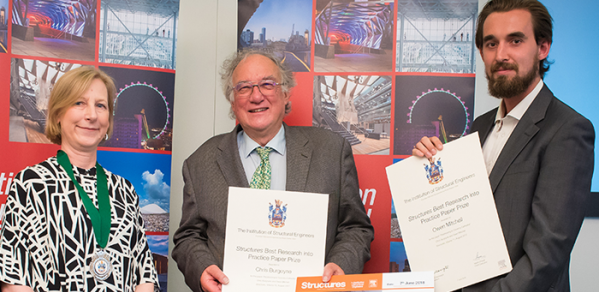
Emeritus Professor Chris Burgoyne and former student Owen Mitchell have been awarded The Institution of Structural Engineers' People and Papers Awards 2018: best Research into Practice prize, for their paper on "Prestressing in Coventry Cathedral". The paper is based on work carried out by Owen during his 4th year project.
By placing the information in the public domain it will be useful for both historians of church architecture and engineers in future generations who may have to work on the building.
Coventry Cathedral was completed in the early 1960s and has some prestressed elements to resist lateral thrust from the roof. Other prestressed structures of a similar age have had corrosion problems and this has drawn attention to the fact that there is little publicly available information about the structural system at Coventry. The paper addresses that issue and is in three sections.
The first summarises the four different prestressing systems in the cathedral and estimates the amount of prestress and its purpose in each location. By placing the information in the public domain it will be useful for both historians of church architecture and engineers in future generations who may have to work on the building.
Although there is no evidence of corrosion in the building at the moment, it is impossible to inspect the existing tendons, so the second section considers what might happen to the structure if corrosion of the tendons were to occur. It is concluded that very little warning of failure would be given, which would be especially important for the tendons over the Baptistry window and those in the Nave ties.
The final section considers what could be monitored to give as much warning as possible about future problems. The effects of loss of an individual tendon, which would not by itself be sufficient to cause failure of the structure, would cause only very small strains that would be difficult to distinguish from the background strains caused by temperature change. Many of the principles discussed in the second and third sections would be applicable to many other prestressed concrete structures.
The Institution of Structural Engineers' People and Papers Awards 2018 recognise outstanding contributions to structural engineering and to Institution life, through innovative educational initiatives, papers published in The Structural Engineer, lectures, and regional group activity. They cover the whole range of Institution life, from outstanding young professionals to those recognised for a lifetime of achievement and service.

